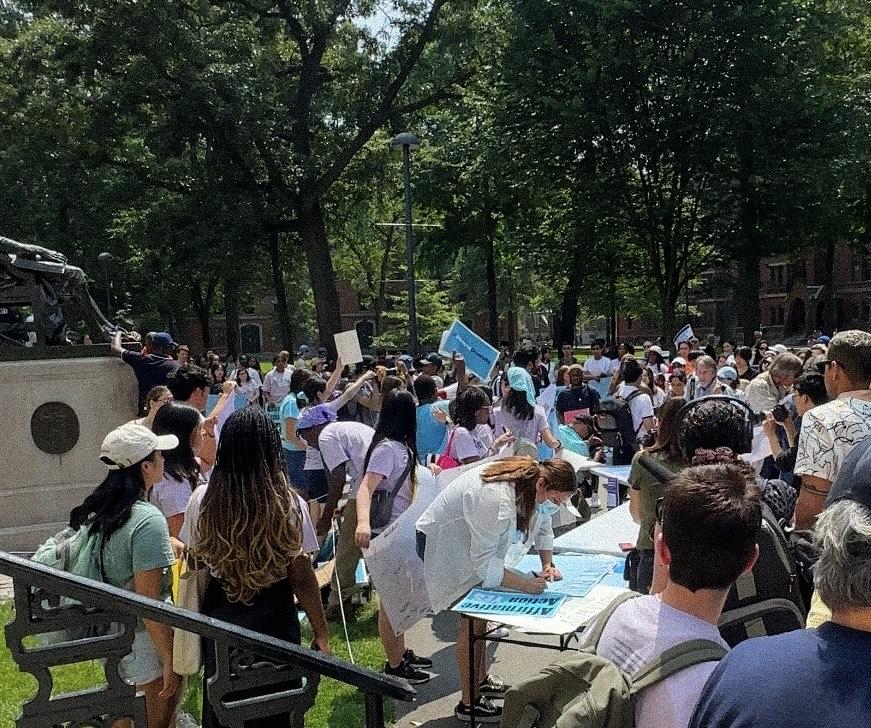College admissions season is in full swing, and no one is more stressed than the seniors who are finishing their applications and stacking their resumés before sending them off to their dream schools. Unfortunately, for many teenagers, being a dedicated student, a selfless individual, and a charismatic soul is not enough… unless you are of a specific race. That is, until the recent controversial Supreme Court case decision in Students for Fair Admissions, Inc. (SFFA) v. President & Fellows of Harvard College (Harvard), where race-based affirmative action was eliminated from college admissions.
First, what exactly is race-based affirmative action in regards to college admissions? It refers to giving special consideration to historically excluded groups, such as African Americans, Native Americans and Alaska Natives, Pacific Islanders, and Latin Americans. SFFA v. Harvard questioned whether accounting for race in the admissions process violates the Equal Protection clause in the Fourteenth Amendment. The ruling in this case has effectively ended race-based admissions policies at colleges and universities.
At the superficial level, the college admissions process seems cutthroat yet fair. However, there is much more that goes on beneath the surface that we, as students, have no control over. The general process of how an application goes through at the Harvard admissions office starts with a “first reader” who screens the applicant and assigns a numerical score in six different categories.
One of the categories, “overall,” is where the “first reader” would generally factor in the race of the student, thereby placing students who are in a racial minority at a higher score. Afterward, the admissions subcommittees review all applications from a particular geographical area. Taking into account the student’s race, these region-specific officers make recommendations to the full admissions committee. After going through several more rounds of admissions committees and ensuring that the student’s background has been completely analyzed and defined into groups—a significant one being race—the committee finalizes its acceptances, which can be significantly impacted by affirmative action policies.
With the end of affirmative action, it seems that the admissions process has become a bit more equitable for all students. However, this is not the case, as affirmative action, no matter how unfair to students who may have been more qualified yet still not accepted on the basis of their race, increased student diversity and recognition of racial minorities. Now, the end of race-conscious decisions paves the way for other forms of affirmative action, such as legacy preferences, to play a greater role. Unfortunately, such affirmative action policies disproportionately benefit white students, an already historically privileged group.
While the Supreme Court’s decision to end race-based affirmative action as a factor of the college admissions process seems like a noble idea, it is really a decision that will result in a massive drop in enrollment numbers for racial minorities in the coming years.






































































